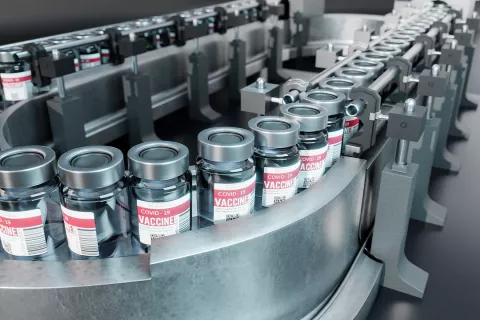Contact Today
Blog Auto Popup FormThe medical product landscape is constantly evolving. New technologies emerge; even well-established products require ongoing monitoring to ensure continued safety and efficacy. This is where post-market surveillance (PMS) and enforcement come into play. Regulatory authorities have a critical role in ensuring that medical products, from life-saving medications to cutting-edge devices, continue to meet the high standards for which they were approved.
This blog post delves into the steps typically followed by regulatory authorities to navigate post-market surveillance (PMS) and enforcement effectively. We'll explore how a risk-based approach, targeted activities, and robust legal frameworks form the foundation for safeguarding public health.
To navigate post-market surveillance (PMS) and enforcement effectively, regulatory authorities typically follow these steps:
- Risk-Based Approach: Authorities prioritize surveillance activities using a risk-based approach. This involves assessing the potential risks associated with different products and focusing resources on those that pose the highest risk to public health.
- Targeted Activities: Based on risk assessments, user feedback, and information from manufacturers' post-market surveillance systems, authorities may undertake targeted surveillance activities to monitor specific issues in the distribution chain.
- Legal Framework: The legal basis for PMS and enforcement should be established in law, providing the authority with the power to conduct surveillance and take necessary enforcement actions.
- Enforcement of Basic-Level Controls: Authorities must ensure that basic-level regulatory controls are effectively enforced before implementing more advanced controls.
- Resource Availability: Adequate resources, including financing and technical expertise, are necessary to support expanded-level regulatory controls and enforcement activities.
- Public and Stakeholder Engagement: Information gathered from PMS activities should be made available to the public and shared with other regulatory agencies, WHO, and harmonization initiatives to promote transparency and collaboration.
- Legal Actions: The authority should be prepared to take legal actions to protect the public, such as product withdrawal, recall of batches, de-registration of products, prosecution of offenders, and other necessary legal actions.
- Monitoring and Evaluation: Regular monitoring and evaluation are important to assess the effectiveness of PMS and enforcement actions and to make necessary adjustments.
- International Guidance: Regulatory authorities often refer to international guidelines, such as those from the International Council for Harmonisation (ICH), to standardize adverse event reporting and other PMS activities.
- Collaboration: Authorities may collaborate with other national and international bodies to enhance monitoring systems and share best practices.
- Proactive and Reactive Surveillance: PMS can be both proactive, involving systematic surveys based on a study protocol, and reactive, based on market complaints or reports of substandard or falsified products.
- Technical and Scientific Methods: Surveillance may involve PMS and Enforcement
various methods, from visual analysis of products to full chemical analysis in a laboratory setting.
The world of regulatory oversight is complex and ever-changing. As a medical product manufacturer, staying abreast of the latest post-market surveillance (PMS) and enforcement activities can be challenging. This is where Freyr Solutions can be your invaluable partner. By partnering with Freyr Solutions, you gain a trusted advisor with the expertise to navigate the complexities of post-market surveillance (PMS) and enforcement. With Freyr's support, you can ensure your medical products continue to meet the highest safety standards, fostering trust with regulatory authorities and ultimately, protecting patient well-being. Reach out to us now!










